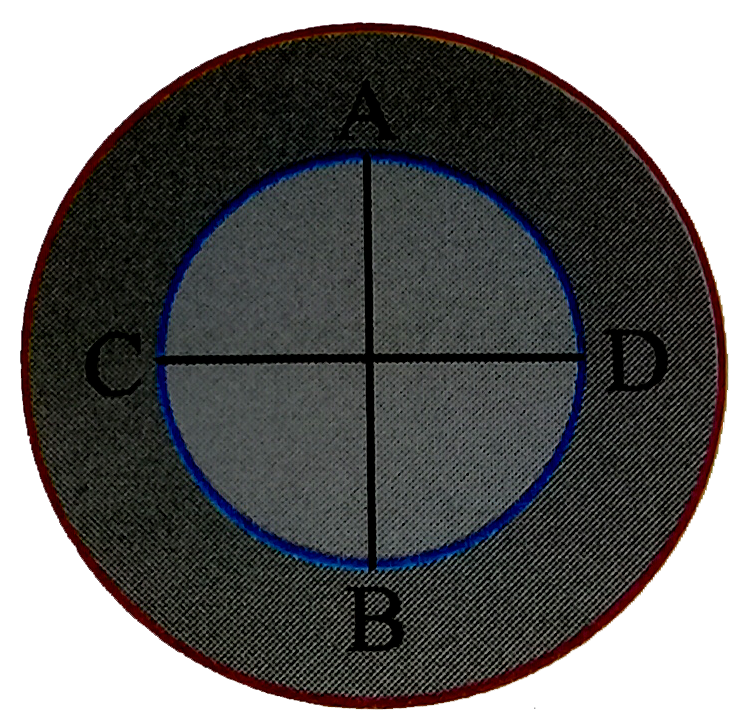Diameter of capillaries for RBC to pass should be
4μ
Less than 5μ
More than 5μ
More than 10μ
The correct Answer is:A
To determine the diameter of capillaries for red blood cells (RBCs) to pass through, we can follow these steps:
Step 1: Understand the Size of RBCs
- Red blood cells (RBCs) are typically about 6 to 8 micrometers in diameter. This size is crucial in determining the diameter of the capillaries they need to pass through.
Step 2: Analyze Capillary Diameter
- Capillaries are the smallest blood vessels in the body, designed for the exchange of gases, nutrients, and waste products between blood and tissues. The diameter of capillaries is generally around 5 to 10 micrometers.
Step 3: Determine the Minimum Diameter Requirement
- For RBCs to pass through capillaries, the diameter of the capillaries must be less than or equal to the diameter of the RBCs. Since RBCs are about 6 to 8 micrometers, capillaries must have a diameter that can accommodate them.
Step 4: Conclusion
- The diameter of capillaries for RBCs to pass should be less than 5 micrometers. This ensures that they can pass through the narrowest sections of the capillaries, which may be slightly smaller than the RBCs themselves.
Final Answer
- The diameter of capillaries for RBCs to pass should be less than 5 micrometers.
---
- Red blood cells (RBCs) are typically about 6 to 8 micrometers in diameter. This size is crucial in determining the diameter of the capillaries they need to pass through.
- Capillaries are the smallest blood vessels in the body, designed for the exchange of gases, nutrients, and waste products between blood and tissues. The diameter of capillaries is generally around 5 to 10 micrometers.
- For RBCs to pass through capillaries, the diameter of the capillaries must be less than or equal to the diameter of the RBCs. Since RBCs are about 6 to 8 micrometers, capillaries must have a diameter that can accommodate them.
- The diameter of capillaries for RBCs to pass should be less than 5 micrometers. This ensures that they can pass through the narrowest sections of the capillaries, which may be slightly smaller than the RBCs themselves.
- The diameter of capillaries for RBCs to pass should be less than 5 micrometers.
Similar Questions
Knowledge Check
IF the diameter of a capillary tube is doubled, then the height of the liquid that will rise is
ATwiceBhalfCsame as earlierDNone of theseIn experiment for measuring surface tension by capillary rise method, reading or positions A, B, C and D for internal diameter of capillary tube are given as under
A(cm)=1.006
B(cm)=1.009
C(cm)=1.004
D(cm)=1.009

Mean intenal radius of capillary isA0.002cmB0.003cmC0.004cmD0.005cmA liquid rises to a height of 1.8 cm in a glass capillary A another glass capillary B having diameter 90% of capillary A is immersed in the same liquid the rise of liquid in capillary B is
A1.4 cmB1.8 cmC2.0 cmD2.2 cm
A number of holes are drilled along a diameter of a disc of radius R. To get minimum time period of oscillations the disc should be suspended from a horizontal axis passing through a hole whose distance from the centre should be
View SolutionIf water rises in a capillary tube upto 3 cm . What is the diameter of capillary tube (Surface tension of water =7.2×10−2N/m)
View SolutionThe diameter of RBC is
View SolutionFor liquid to rise in a capillary tube , the angle of contact should be
View SolutionWater rises up to a height h in a capillary tube of certain diameter. This capillary tube is replaced by a similar tube of half the diameter. Now the water will rise to the height of
View Solution
